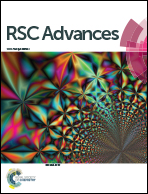Abstract
Mussel-inspired free-standing composite films were formed by polymerization of dopamine in the presence of polyethyleneimine at the air/water interface. These films have controllable thickness and asymmetric structure. They can be potentially developed as templates for the fabrication of silver, hydroxyapatite, titania and silica hybrid films.


 Please wait while we load your content...
Please wait while we load your content...